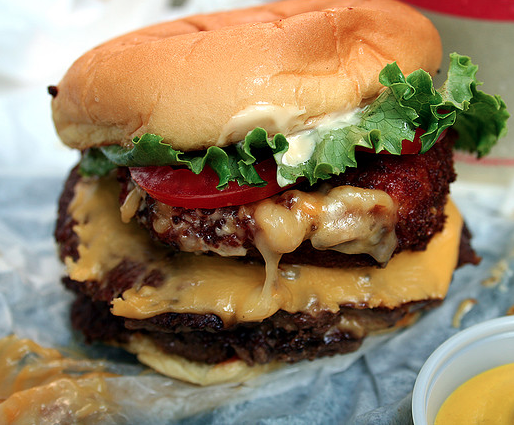Look at this juicy, fat burger. Imagine I own the chain of restaurants that serves this meat and bread behemoth to hungry customers. On the menu, it is listed as having 500 calories. That seems like a bargain for all the cheese and onion rings it boasts. It seems almost too good to be true.
That’s because it probably is, and in more ways than you can imagine. The burger might be double, even triple the number of calories it says it has. I, the restaurant owner, know this. I also know you probably won’t order it if you know the truth about how many calories it contains.
There has to be something illegal about this, right? Restaurants can’t just lie about the calories in their menus, can they?
Yes, they can, and they do. What nutritionists and health advocates have pushed for in restaurants, fast food establishments, and even grocery store prepared food sections is posted nutritional information. More and more states have made it a legal requirement, from California to New York, in Chipotles and Olive Gardens and Burger Kings. The idea behind all of this is that if you know just how many calories you’re consuming when you order a double buffalo ranch chicken sandwich with extra mayo and bacon, you’re more likely to make better choices.
But that doesn’t mean the nutritional information posted is accurate. It merely means there are numbers on a board that could be right, or they could be very wrong. Restaurants have the sole control over scientifically testing how many calories are in their menu offerings, and subsequently, neither the FDA nor local enforcing agencies can do much when it comes to ensuring the accuracy of the posted nutritional information.
While no restaurant chain has been ever accused and proven of falsifying the nutritional information of their menu items, dozens and dozens of people have tested what’s out there against the nutritional information provided to them by restaurants. Time and time again, the information provided is wrong.
Just how wrong? Consumer Reports found that the average variance of nutritional information accuracy is around twenty percent. If you’re on a modest 2000 calorie a day diet, this could mean you might be consuming an extra 400 calories a day without any idea about it. What does this add up to? Close to an extra pound of fat a week.
Tucked away deep in the Affordable Healthcare Act of 2010 is a provision requiring “the number of calories in each standard menu item on a menu or menu board” to be posted in restaurant chains of more than twenty outlets. But nowhere is there a mention about the accuracy of this information.
As we move towards a more and more health-conscious national state of mind, requiring the posting of nutritional information is the go-to issue of lawmakers interested in appeasing a calorie-counting population. But without laws also requiring the accuracy of the nutritional information, what good does the information do?
The misinformation might actually be worse than no information at all. That “500 calorie” burger is certainly not an invitation to eat dessert, but with bad information, you might think it is.
And I, the restraint owner, would just love it if you went ahead ordered our “Cherry Chocolate Pie Sundae Bomb.” After all, you deserve it.









